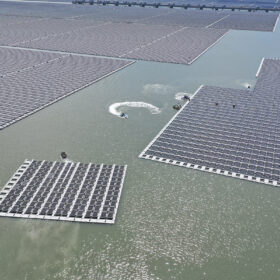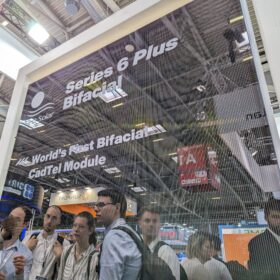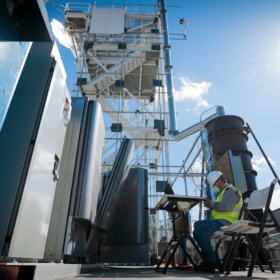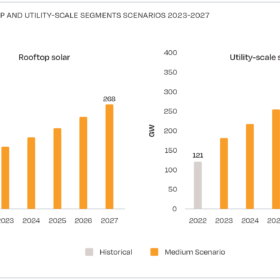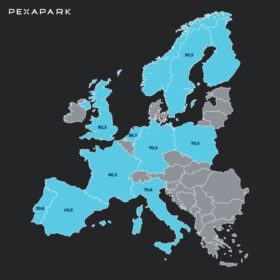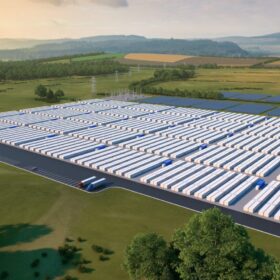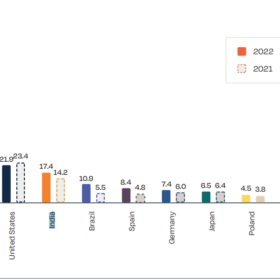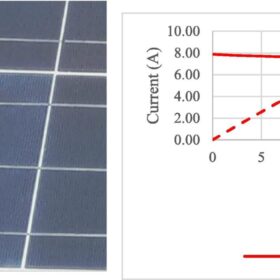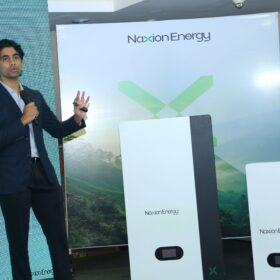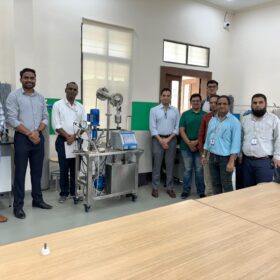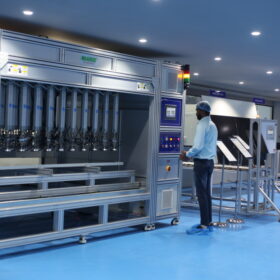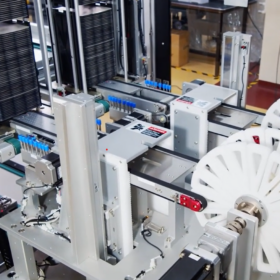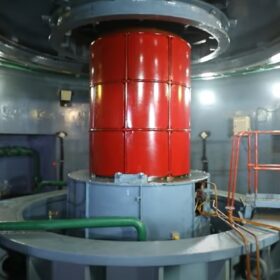Reducing solar module temperature with acrylic sheets
Jordanian researchers have developed a method using acrylic sheets to reflect and absorb unused solar radiation in PV power generation. The solution has the potential to decrease solar panel temperature by more than 14% and increase power yields by approximately 2%.
Ciel & Terre hits 1.5 GW floating PV pipeline
French floating PV specialist Ciel & Terre says it now has more than 1.5 GW of floating PV projects in the design phase or under construction. It has already completed 280 floating solar projects in more than 30 countries, totaling 820 MW.
First Solar showcases pre-commercial bifacial thin-film PV modules
First Solar has announced a limited production run of the “world’s first” bifacial solar panel with a cadmium telluride (CdTe) semiconductor. The pre-commercial Series 6 Plus Bifacial module is making its debut this week at Intersolar Europe in Munich, Germany.
US green hydrogen market to grow six-fold to $1.4 trillion, said Deloitte
By 2050, the practice of using renewable energy to electrolyze water and create hydrogen fuel may reach a global market of well over $1 trillion USD.
Global rooftop PV additions soar by 50% to 118 GW in 2022
The world installed 239 GW of new solar capacity in 2022, according to SolarPower Europe. The rooftop PV segment accounted for 49.5% of additions – the highest share in the past three years. The rooftop sectors in Brazil, Italy, and Spain grew by 193%, 127%, and 105%, respectively.
PPA prices falling across Europe, says Pexapark
Pexapark says power purchase agreement (PPA) prices are falling in Europe, with prices in Spain and Portugal down by 6.4% and 6.2% to €40.90 ($43.99)/MWh and €39.60/MWh, respectively.
Form Energy to deploy 100-hour iron-air battery system in US
US utility Georgia Power has more than 850 MW of active energy storage projects under development or in operation across its service territory.
India installed third most solar capacity in the world in 2022
India installed an impressive 17.4 GW of new solar capacity in 2022, retaining its third spot in annual PV capacity addition globally.
Research shows polycrystalline panels from 11 different producers degrade more than warranty rate
A research group in Ghana has conducted a series of tests to assess the performance of polycrystalline solar modules in PV systems operating in their home country for at least 5 years. They found that the vast majority of the panels may ‘fail’ before 20 years in operation under outdoor conditions.
Agrivoltaics for vertical farming
An Italian research group has assessed the advantages of combining solar power generation in greenhouses with vertical farming. The scientists claim this new approach offers better land use while increasing agricultural yield.

